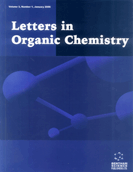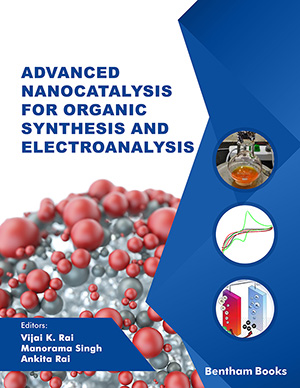Abstract
The main purpose of the present study is to check the therapeutic role of Amaranth squalene against skin cancer by performing docking studies with TGF-β, MIA and Raf which are important target proteins of signal transduction pathways leading to skin cancer development in human beings. In accordance with the World Health Organization, one of the leading causes of death worldwide is cancer. Discovering alternative, economical, and effective cancer treatment options is essential due to the high cost of the currently existing cancer therapies and other treatment-related constraints. Grains of Amaranth, a nutritionally important pseudocereal, are rich in squalene which possess important pharmacological properties. Due to the presence of squalene, Amaranth grain can be used as food based therapy for many dreadful diseases including cancer. Melanoma type of skin cancer is a serious form of skin cancer which is responsible for high mortality rate world wide. At present, Vemurafenib, which binds Braf and commonly used as drug for treatment of skin cancer has various adverse effects. Therefore, in the current investigation, the interaction of squalene a terpenoid compound from Amaranth, with proteins of skin cancer signalling pathway such as TGF-beta, Braf, and M.I.A was studied through molecular docking conducted by using Autodock vina software. To check the therapeutic role of Amaranth squalene against skin cancer by performing docking studies with TGF-β, MIA and Raf which are important target proteins of signal transduction pathway leading to skin cancer development in human beings. The 3D crystal structures of the proteins examined in this investigation were queried from The Research Collaboratory for Structural Bioinformatics Protein Data Bank (RCSB PDB) Web server (https:// www. rcsb. org/). For the present study, three proteins were taken, TGF-Beta (PDB ID:3tzm. MIA (PDB ID: 5ixb, BRAF (PDB ID:5jrq. The structure of squalene was taken from the PubChem database and was converted from .sdf format to .pdb format using Open- Babel. pkCSM (http:// structure. bioc.cam. ac.uk/pkcsm) along with SwissADME (http:// www. swiss adme.ch/ index. php) websites were used for Drug-likeliness properties of the compound. Anticancerous behaviour of Squalene was predicted with support of software PASS. Active Site of target Protein was projected by Biovia Drug Discovery Studio Visualizer 2020 (PDB ID: (TGF-β: 3tzm), (MIA: 5ixb), (BRAF: 5jrq). Protein-ligand docking studies were performed using the AutoDock v4.2.6 program. On the basis of the docking score, it was revealed that Amaranth squalene strongly interacted with Braf (5jrq) with binding energy of -14.4 followed by TGF-beta (3tzm) and MIA (5ixb) as compared to well-known drug Vemurafenib which has a binding energy of -4.9 only. Moreover, squalene ligand satisfied Lipinski’s rule of 5. Squalene may have enzyme-inhibitory action according to docking results and also be useful in in-vivo anti-cancerous screenings on model organisms. The present study demonstrated the therapeutic potential of Amaranth Squalene in the prevention of skin cancer as revealed by it’s stronger interaction with BRAF, TGF-β and MIA proteins as compared to Vemurafanib, a well-known drug used to treat skin cancer. The studies paved the way for Squalene to have a potential drug. Since Amaranth grains possess are enriched with squalene, the nutraceuticals/ food prepared from them has high prospectus to be used as a food based therapy for skin cancer treatment.
Keywords: TGF-β, MIA, Raf, basal cell carcinoma, melanoma inhibitory activity, melanoma, Squalene.
[http://dx.doi.org/10.1038/sj.jid.5701227] [PMID: 18185530]
[http://dx.doi.org/10.1016/j.jaad.2017.08.059] [PMID: 29332704]
[http://dx.doi.org/10.1016/j.jaad.2018.03.024] [PMID: 29588249]
[http://dx.doi.org/10.1136/bmj.e8076] [PMID: 23257063]
[http://dx.doi.org/10.1371/journal.ppat.1006723] [PMID: 29190285]
[http://dx.doi.org/10.1002/cam4.4046] [PMID: 34105887]
[http://dx.doi.org/10.3322/caac.21590] [PMID: 31912902]
[http://dx.doi.org/10.1097/CMR.0b013e328351fa4d] [PMID: 22395415]
[http://dx.doi.org/10.1016/j.jid.2016.01.035] [PMID: 26902923]
[http://dx.doi.org/10.3892/or.2021.8148] [PMID: 34296292]
[http://dx.doi.org/10.1158/1078-0432.CCR-06-0162] [PMID: 16857807]
[http://dx.doi.org/10.1038/sj.onc.1210421] [PMID: 17496922]
[http://dx.doi.org/10.1016/j.addr.2009.09.005] [PMID: 19804806]
[PMID: 3935620]
[PMID: 2408954]
[http://dx.doi.org/10.1093/jnci/56.6.1237] [PMID: 994224]
[http://dx.doi.org/10.1016/j.cellsig.2011.09.027] [PMID: 21983015]
[http://dx.doi.org/10.1021/jm800539g] [PMID: 18783202]
[http://dx.doi.org/10.46542/pe.2022.222.284288]
[http://dx.doi.org/10.1021/acschembio.6b00529] [PMID: 27571413]
[http://dx.doi.org/10.1186/1758-2946-3-33] [PMID: 21982300]
[http://dx.doi.org/10.1186/s42269-021-00631-w]
[http://dx.doi.org/10.1016/j.ejphar.2011.04.048] [PMID: 21554868]
[http://dx.doi.org/10.1016/j.bmcl.2008.09.064] [PMID: 18835165]
[http://dx.doi.org/10.1007/s00044-010-9398-y]


























